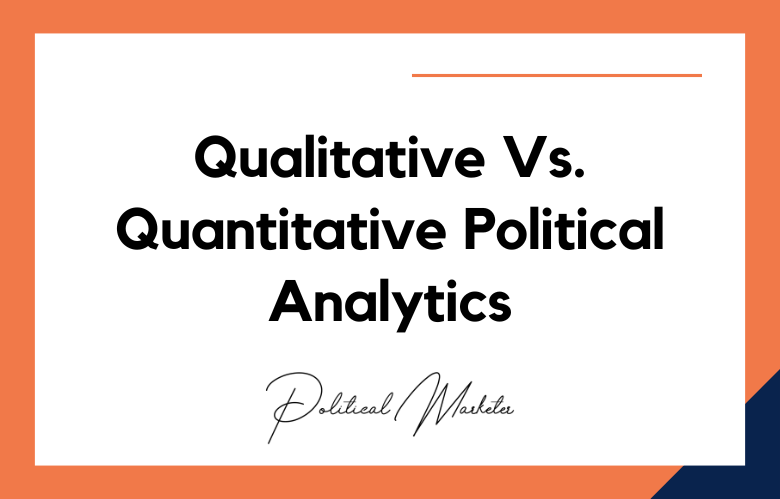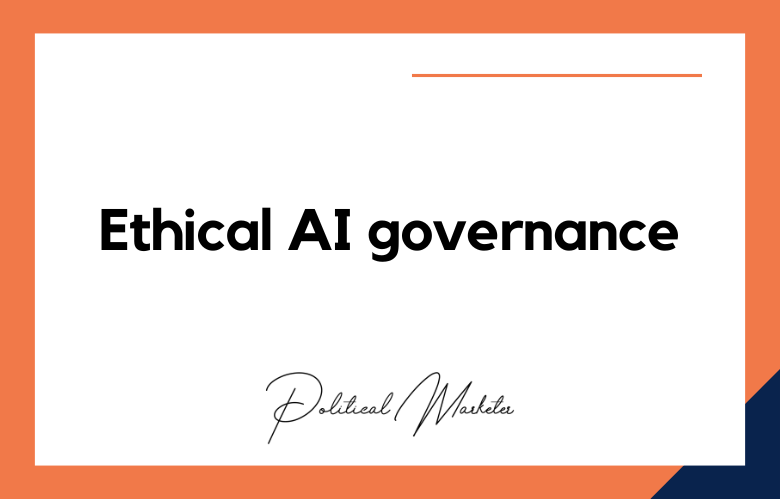Are you considering running for office? Are you curious about the best ways to reach potential voters? Whether running a local race or seeking a position on the national stage, understanding political advertising strategies is essential.
We’ll take a look at how to reach voters online and offline. We’ll also discuss the most effective advertising tactics for different campaign goals.
In the past, political advertising was all about television and radio spots. But with the rise of the internet, candidates are now turning to social media and online platforms to reach voters.
And while traditional advertising methods still exist in today’s campaigns, online advertising is becoming increasingly important.
What are the best online and offline advertising strategies to reach voters? Let’s take a look.
Political Advertising Strategies using Online
- Establish a presence on social media
- Ensure your website is current with current events and reflects the values of your campaign.
- Use Google Adwords to get more traffic to your site
- Create an email list for people who want updates from you or are interested in volunteering for your campaign
- Encourage sharing by posting content that will be shared easily, such as images, videos, memes, gifs, etc
- Create a robust and eye-catching logo
- Use bright, contrasting colors
- Add an FAQ page with all the information about your company you want potential customers to know.
- Include testimonials from satisfied clients or post customer reviews if they exist.
- Create a Facebook page
- Find people who are interested in your topic and target them with ads
- Run Google AdWords campaigns to drive traffic to your website, Facebook page, or blog
- Establish a presence on social media
- Create an email list
- Use paid ads to promote your site and posts
- Post quality content that is interesting, informative, and engaging
- Share other people’s content to build relationships
- Create a website that is easy to read and navigate
- Get social media accounts set up with the exact keywords
- Optimize your website for search engines by including relevant keywords throughout the site and adding content frequently
- Develop a solid and consistent message to be used in all of your posts
- Post content that is relevant to the audience you are targeting
- Use targeted ads on Facebook to reach specific demographics, such as women ages 18-25 who live in Florida
- Engage with other pages by liking their posts, commenting on them, and sharing them with followers
- Use a professional-looking website for advertising your campaign
- Create an email list of supporters and send them regular updates on your progress
- Ask for donations via social media, such as Twitter and Facebook
- Send out direct mailings with information about your campaign to people in the area you are running in
- Target a specific audience
- Use persuasive language and images
- Create a campaign that will resonate with your target audience
- Appeal to the emotions of your targets
- Create an emotional connection with your message
- Make it easy to share and promote your campaign
- Use video ads when possible
- Start building a following by creating engaging content that is relevant to the audience you’re trying to reach
- Run ads on Facebook, Instagram, Twitter, etc., using different strategies for each platform.
Political Advertising Strategies using Offline
- Develop a strategy
- Identify your target audience
- Research your competition
- Create ad content
- Produce ad materials
- Place ads in the suitable locations
- Evaluate results
- Understand the different types of political advertising
- Create a strategy for your campaign
- Research your target audience
- Produce creative and effective adverts
- Use offline marketing methods to promote your campaign
- Evaluate the results of your advertising campaign
- Identify your target audience
- Develop a strategy for reaching your target audience
- Create compelling and persuasive messages
- Produce high-quality ad materials
- Use paid media to amplify your message
- Decide on a message or slogan
- Develop creative strategies for delivering your message
- Produce effective print and broadcast advertisements
- Evaluate the results of your advertising campaign
- Create a strategy for reaching out to the target audience
- Decide on the tone of voice that will be used in advertising
- Produce adverts that are creative and engaging
- Make sure all advertising is accurate and up-to-date
- Use offline channels such as TV, radio, and print media to reach the target audience
- Monitor the effectiveness of advertising campaigns
- Establishing your campaign’s tone of voice
- Targeting the right voters
- Developing creative ad ideas
- Choosing the right media outlets
- Producing effective TV ads
- Crafting persuasive radio ads
- Creating attention-grabbing online ads
- Utilizing grassroots marketing tactics
- Establish your campaign goals
- Research your target audience
- Develop creative strategies and slogans
- Produce ad materials
- Place ads in local newspapers, magazines, and on TV or radio stations
- Hold public events to get your message out there
- Mobilize volunteers to help spread the word
- Use social media platforms to connect with voters.
Conclusion
Political advertising is a complex and nuanced beast. It’s essential to get it right to reach the right voters, persuade them of your candidate or cause, and motivate them to take action.
Luckily, we have a lot of experience in this area and can help you craft an effective political advertising strategy that uses online and offline tactics to reach your target audience.
Contact us today to learn more about our political advertising consulting services!
Political Advertising Strategies using Online and Offline: FAQs
What Is Political Advertising?
Political advertising involves creating and distributing messages to influence public opinion, promote political candidates, or drive voter turnout through various media platforms.
Why Is Political Advertising Important in Elections?
It shapes voter perception, raises awareness about candidates or issues, and helps mobilize supporters while countering opponents’ narratives.
What Are the Main Types of Political Advertising?
Types include television ads, radio spots, print ads, digital ads, social media promotions, SMS campaigns, outdoor banners, and influencer collaborations.
How Has Digital Advertising Changed Political Campaigns?
Digital ads allow for precise targeting, real-time performance tracking, lower costs, and personalized messaging to niche voter groups.
What Role Does Data Play in Political Advertising?
Data helps campaigns segment audiences, tailor messages, predict behavior, and optimize ad spend for maximum ROI.
How Are Political Ads Targeted to Specific Voters?
Using demographics, location, behavior, psychographics, and voter files, campaigns target ads to the right audience segments across platforms.
What Platforms Are Commonly Used for Political Digital Ads?
Platforms include Google, YouTube, Facebook, Instagram, X (formerly Twitter), Snapchat, and regional apps like ShareChat and Moj.
What Is Programmatic Advertising in Politics?
It is the automated buying of digital ad space using algorithms to reach specific voters based on data-driven insights.
How Do Campaigns Use A/B Testing in Advertising?
They test different headlines, creatives, CTAs, or formats with small audiences to identify the most effective versions before scaling.
What Are Negative Political Ads?
These are ads that criticize opponents’ policies, records, or behavior to create doubt or drive opposition among voters.
Are There Regulations for Political Advertising?
Yes, electoral bodies like the Election Commission of India or the FEC in the US set rules on disclosure, spending limits, and content standards.
What Is Geo-Fencing in Political Advertising?
Geo-fencing targets voters in specific physical locations (like college campuses or polling stations) with relevant mobile or digital ads.
How Do Emotional Appeals Work in Political Ads?
Emotional storytelling, symbolism, and identity-based messaging help forge deeper voter connections and increase recall.
What Is the Difference Between Persuasion and Mobilization Ads?
Persuasion ads aim to change voter opinions, while mobilization ads energize and activate the base to vote.
How Do Political Ads Address Undecided Voters?
They focus on issue-based messaging, comparisons, endorsements, and credibility-building to influence swing voters.
What Role Does Video Content Play in Political Advertising?
Video is highly engaging and used for storytelling, speeches, testimonials, and social-first formats like reels and shorts.
Can Political Ads Be Hyperlocal?
Yes, ads can be tailored by ward, constituency, district, or even booth level using localized language and issues.
How Do Political Campaigns Manage Ad Budgets?
They allocate based on audience size, platform performance, timing (pre-election peaks), and strategic importance of regions.
How Is ROI Measured in Political Advertising?
ROI is assessed via metrics like engagement, reach, cost per impression, sign-ups, polling shifts, or vote share in key regions.
What Is the Future of Political Advertising?
Future trends include AI-driven messaging, real-time voter sentiment tracking, deepfake detection, immersive AR/VR formats, and stricter ad regulations.
One way to get in touch is by filling out our online form on this site or give us a call at
+91 9848321284. Let’s work together today!











